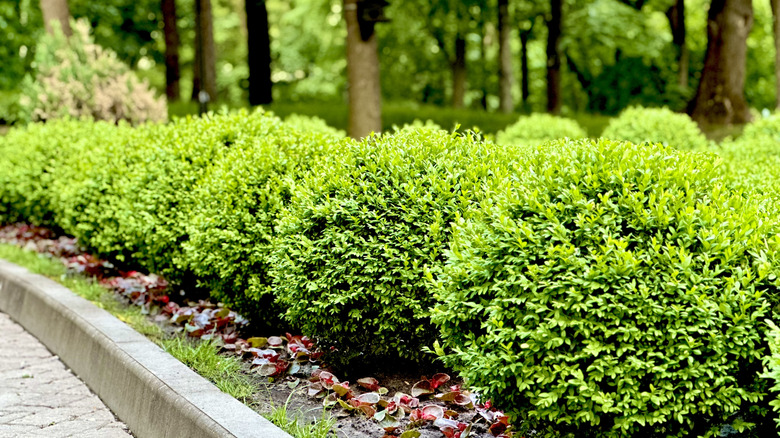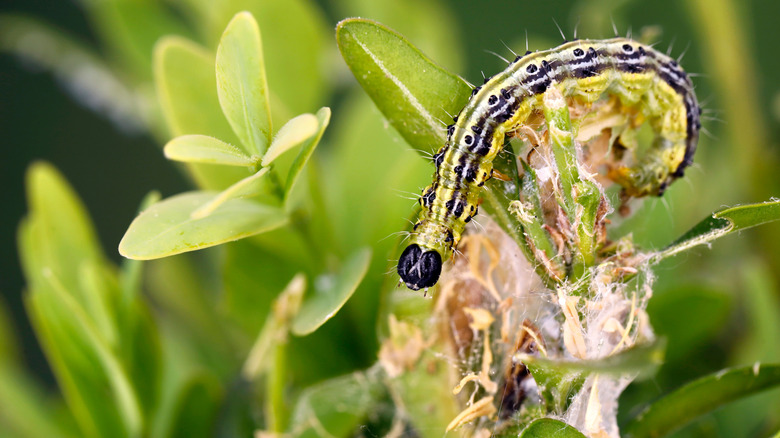How To Prevent Boxwoods From Being Destroyed By This Invasive Pest
If you live in eastern or midwestern North America, you may have noticed a worrying trend with your local boxwoods — they all seem to be dying! While some of these deaths are likely caused by a fungal disease known as boxwood blight, many others are caused by a new threat: An invasive insect from Asia known as the box tree moth. Since it was first discovered in the United States in 2021, the pest has been spreading, leaving dead and dying shrubs, hedges, and even boxwood animal topiaries in its wake.
To protect your beautiful boxwood shrubs, it's important to check them regularly and promptly treat or remove any infested shrubs. If you already have boxwoods in your landscape, you should be extremely cautious about purchasing more, as they could carry the moth. Additionally, be aware of nearby quarantine zones and avoid transporting boxwoods from those regions.
Learning what box tree moths look like at all stages of development and checking your shrubs for them regularly is essential for catching the problem early and giving your plants the best chance of recovery. One noticeable sign that box tree moths have found your shrubs is a silky webbing tangled in the leaves of your boxwood. A closer look may also reveal small caterpillars with green and black vertical stripes. If your boxwood has a serious infestation, it will likely be losing leaves and have damage to its bark as well. If you see evidence of box tree moths, first check your local agricultural offices to see if your infestation should be reported to your county or state. Then, get to work on pest control solutions.
Treating or removing infested boxwoods
If you've confirmed that box tree moths have found your boxwood plants, you have some difficult choices to make to prevent your shrubs from being destroyed entirely. For infestations that seem mild, you can try picking the individual caterpillars off by hand. You can also treat the plant with BT (Bacillus thuringiensis) or insecticides like chlorantraniliprole and pyrethroid. Read and carefully follow all instructions. Prune off any heavily damaged parts of your boxwood, as well. However, if the box tree moths have already caused significant damage, it may be best to simply remove the dying shrub.
If you do opt to remove your infested boxwood, be sure to properly bag up the plant, as well as any leaves or other materials from it, and put it in the garbage. It's important to avoid composting infected or infested plant material. Plants like holly, especially inkberry holly (Iex glabra), globe arborvitae (Thuja occidentalis 'Tater Tot'), and other evergreen globe-shaped shrubs can make excellent boxwood replacements if necessary.

